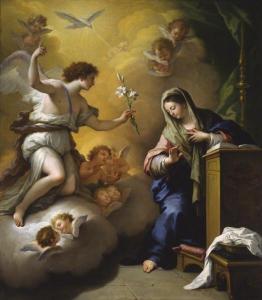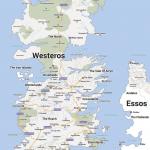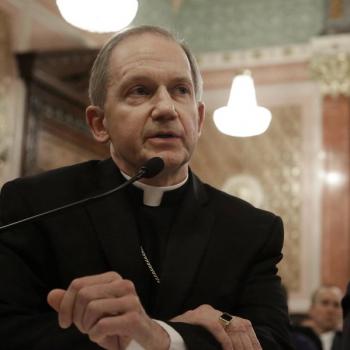
Today, we celebrate two events, one fictional and one real. The fictional event is the destruction of a Ring and the downfall of an evil power. The real event is the Annunciation of our long-promised Redeemer. The two are linked.
“Noon?” said Sam, trying to calculate. “Noon of what day?”
“The fourteenth of the New Year,” said Gandalf. “Or, if you like, the eighth day of April in the Shire reckoning. But in Gondor the New Year will always now fall upon the twenty-fifth of March when Sauron fell, and you were brought out of the fire to the King.”
The significance the downfall of Sauron in The Lord of the Rings occurring on March 25 was lost on me the first time I read it. I hadn’t been to Mass in years, and I don’t recall even hearing about the Annunciation growing up. Such was the quality of my Catholic education.
The significance of March 25
J.R.R. Tolkien, more or less raised in the Birmingham (England) Oratory, had a better Catholic education than I did. He knew exactly what he was doing when he set March 25 as the date for the destruction of the One Ring, because for Catholics, March 25 is the Feast of the Annunciation:
When the sixth month came, God sent the angel Gabriel to a city of Galilee called Nazareth, where a virgin dwelt, betrothed to a man of David’s lineage; his name was Joseph, and the virgin’s name was Mary. Into her presence the angel came, and said, Hail, thou who art full of grace; the Lord is with thee; blessed art thou among women. She was much perplexed at hearing him speak so, and cast about in her mind, what she was to make of such a greeting. Then the angel said to her, Mary, do not be afraid; thou hast found favour in the sight of God.
And behold, thou shalt conceive in thy womb, and shalt bear a son, and shalt call him Jesus. He shall be great, and men will know him for the Son of the most High; the Lord God will give him the throne of his father David, and he shall reign over the house of Jacob eternally; his kingdom shall never have an end. But Mary said to the angel, How can that be, since I have no knowledge of man?
And the angel answered her, The Holy Spirit will come upon thee, and the power of the most High will overshadow thee. Thus this holy offspring of thine shall be known for the Son of God. See, moreover, how it fares with thy cousin Elizabeth; she is old, yet she too has conceived a son; she who was reproached with barrenness is now in her sixth month, to prove that nothing can be impossible with God.
And Mary said, Behold the handmaid of the Lord; let it be unto me according to thy word. And with that the angel left her.
Mary’s “yes,” her fiat, set off a sequence of events that culminated in the greatest event in human history: the passion, death, and resurrection of our Lord. These events begin with Mary’s visit with her kinswoman Elizabeth, pregnant with John the Baptist, who leaps for joy in his mother’s womb upon hearing Mary’s greeting. And then, in due time, Mary, accompanied by her husband Joseph, giving birth to the Most High in a cave, where in the ultimate paradox, “the hands that had made the sun and stars were too small to reach the huge heads of the cattle.”
And then, following a brief public life in which he preached humility, mercy, and most of all the unconditional love of one’s neighbor, Jesus of Nazareth, with his horrible public execution, healed the primordial rift between God and man
The link between Mount Doom and Nazareth
It was against this backdrop that Professor Tolkien chose to frame the climax of The Lord of the Rings. Frodo, accompanied by his companion Sam, has brought the Ring to the one place where it could be destroyed, Mount Doom, deep within Sauron’s realm. But at the moment when he was to cast the Ring into the Cracks of Doom, to destroy it, Frodo, worn down by hunger, thirst, exhaustion, and the corrupting influence of the Ring itself, fails.
“I have come,” he said. “But I do not choose to do what I came to do. I will not do this deed. The Ring is mine!” And suddenly, as he set it on his finger, he vanished from Sam’s sight.
But at the final moment, wholly unexpected, grace intervened: the Ring was destroyed, Sauron cast down, and a king was crowned.
Just as grace intervened on our behalf on that day when, in Nazareth, a backwater of a backwater of the Roman Empire, Mary said yes to the angel Gabriel: sin was destroyed, the devil cast down, and the King was crowned. Though his crown wasn’t silver, but thorns.
As I wrote earlier this month, the Feast of the Annunciation is a rare shaft of light in the dreary season of Lent. It is a solemnity. The Gloria is said or sung at Mass and we may ease up, even if just a bit, on our Lenten penances.
And by this feast, we may look forward to the Resurrection to come, knowing, in the words of Professor Tolkien, that “joy [is] like swords,” and we may pass “in thought out to regions where pain and delight flow together and tears are the very wine of blessedness.”












